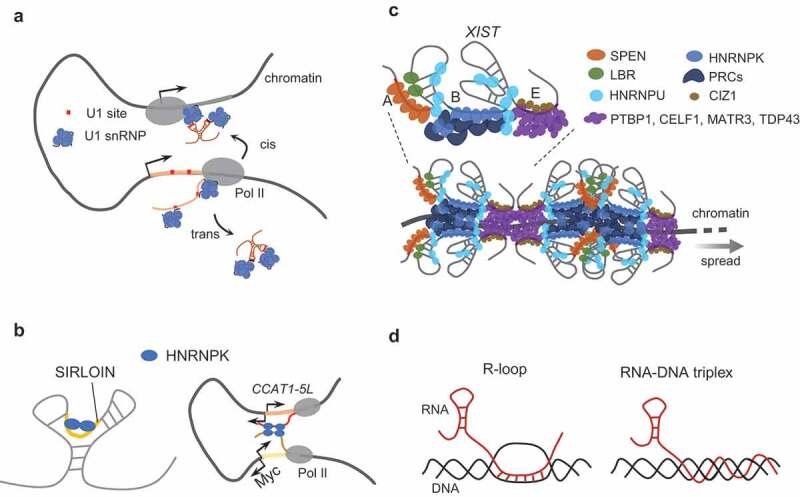Figure 2.

Representative mechanisms regulating RNA nuclear retention and chromatin association. (A) U1 snRNP regulates the chromatin retention of lncRNAs. U1 snRNP binds to U1-recognition motifs embedded in lncRNA transcripts, and further tethers the lncRNA to cis and/or trans chromatin through interaction with transcriptionally engaged Pol II. (B) C-rich motifs interact with HNRNPK to promote RNA nuclear retention. left: HNRNPK interacts with long RNAs harbouring C-rich motifs or SIRLOIN (SINE-derived nuclear RNA LOcalizatIoN, which harbours two C-rich motifs) and promotes their nuclear retention; right: HNRNPK interacts with the super-enhancer (SE)-associated lncRNA CCAT-5 L and with MYC promoter RNA, and promotes chromatin looping between the SE and the MYC promoter through its oligomerization. (C) tandem repetitive sequences interact with multiple regulators to promote the chromatin tethering and spreading of XIST. A-, B-, and E-repeats provide a multivalent platform for recruiting multiple RNA binding proteins and chromatin regulators to promote the chromatin retention of XIST RNA. The oligomerization and phase-separation-potential properties of B-repeat interactors (HNRNPK, polycomb proteins, etc.) and E-repeat interactors (PTBP1, CELF1, MATR3, TDP43, etc.) may promote the spreading of XIST RNA along the X chromosome through a feed-forward mechanism. (D) R-loops (left) and RNA-DNA triplexes (right) regulate the chromatin tethering of RNAs
